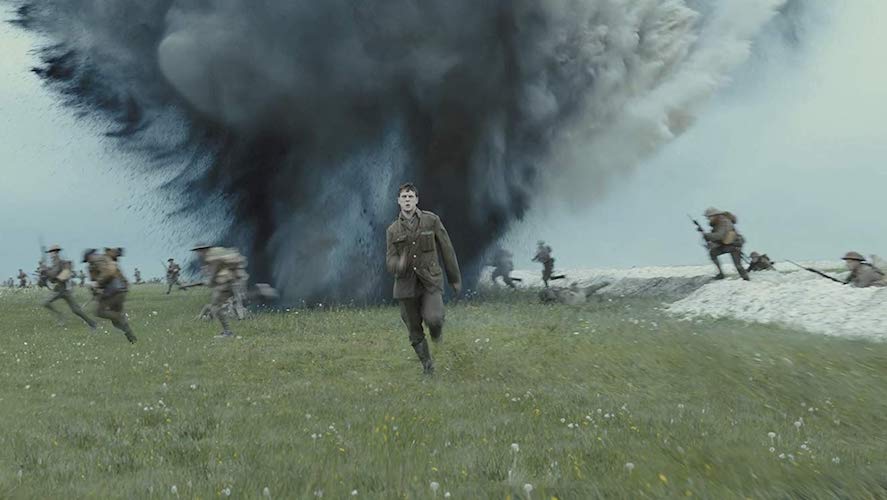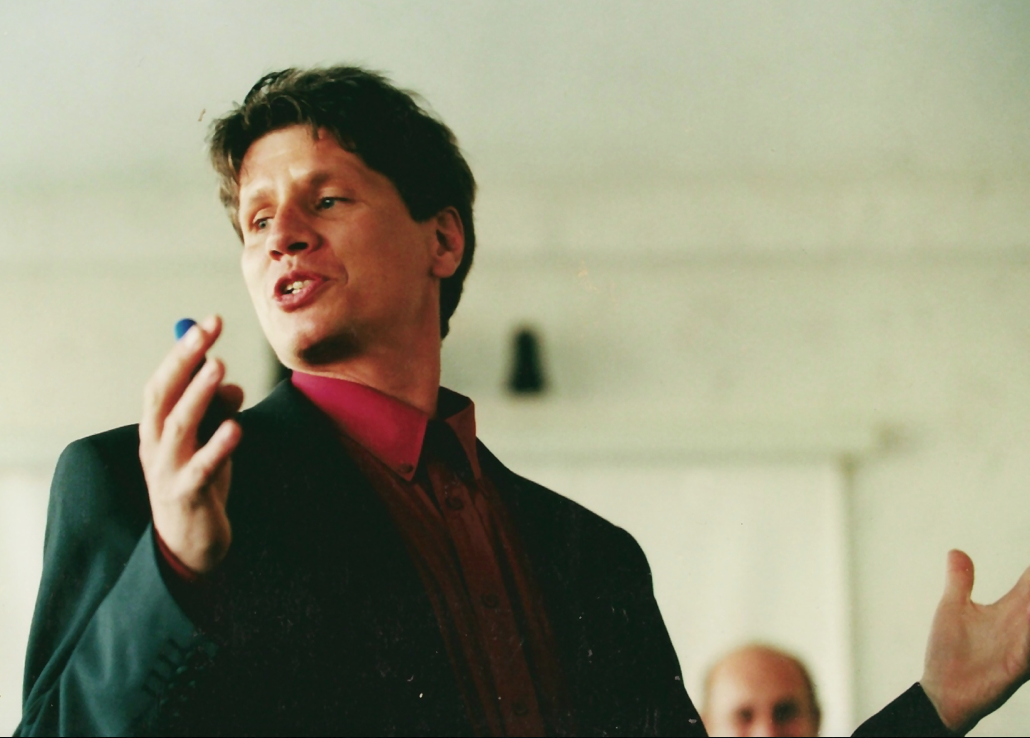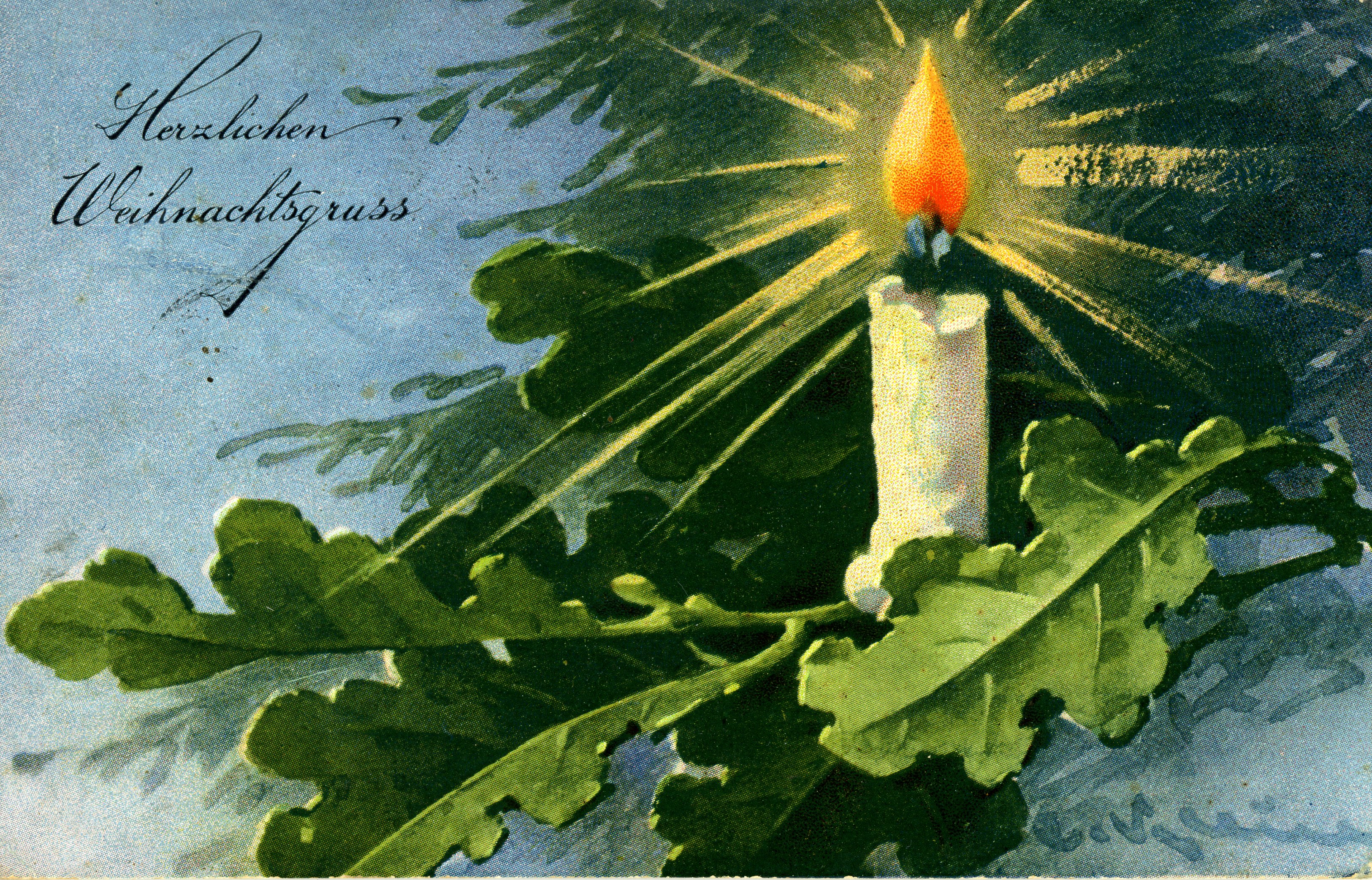
It’s Oscar season, and just when it looked like all prestige films have been accounted for, 1917, the World War I drama directed by Sam Mendes, snuck up from behind with a last minute, end-of-year release date in select markets, just in time to qualify for 2019 award consideration. Since then, it’s won Golden Globes for Best Motion Picture (Drama) and Best Director, popped up on numerous Top-10 lists and garnered ten Oscar nominations, putting it on equal footing with previous front runners Once Upon a Time in Hollywood, The Irishman and Parasite.
1917 takes place in April of its titular year along World War I’s Western Front in northern France. Britain’s 2nd Battalion is advancing forward, thinking they have the Germans on the run. But aerial surveillance shows they’re walking into a trap. Two young corporals, Schofield and Blake, played by George McKay and Dean Charles-Chaplin, are ordered to deliver a message calling off the ill-fated attack that would surely result in the massacre of sixteen hundred troops, Blake’s own brother among them. So begins their hellish journey across no-man’s land.
Of the two, the Fates favor Schofield. Discovering a pail of fresh milk on an abandoned farm, he promptly fills his canteen, enabling him to feed the starving baby he happens across much later. And rather than drowning after falling into a river, he’s carried to the precise spot he needs to be. Are such incidents serendipity or providence? An earlier scene points to the latter possibility when Schofield receives a stigmata-like wound on the palm of his hand. But much of what transpires simply defies logic, as when Schofield, looking for a shortcut, forgets that there are two sides to every trench as he hops up and runs along the side facing battle, dodging shells and bumping into his own stampeding forces.
1917 is shot in what appears to be one long uninterrupted take, creating a continuous flow of action without any perceptible editing. The intent is to invoke real-time immediacy and immersion. Mainstream audiences appear to be swooning over the results. Art house aficionados, who most likely have seen 2002’s Russian Ark or 2015’s Victoria, might be less impressed. Those films were actually shot in one uninterrupted take, unlike 1917, which is a simulated long take comprised of a series of four and five-minute shots seamlessly blended together by computer. It’s a gimmicky visual aesthetic that makes the movie feel a bit like a video game. It’s also self-limiting; montage, crosscutting, and POV perspectives are just a few of the expressive techniques rendered unusable. To its credit, 1917 mostly succeeds without them, even though it feels a little strained and emotionally distancing, as if we’re watching the end result of a technical exercise.
That said, Mendes, with the invaluable help of legendary cinematographer Roger Deakins, delivers several awe-inspiring moments, such as flares falling from the night sky creating a cascade of light and shadow that transforms a bombed-out city into an eerily beautiful, ghostly landscape. Without a doubt, 1917 is technically brilliant, visually stunning, and occasionally moving. If not for its lack of fully realized characters and a deeper story, it might have been a masterpiece. As it was conceived, 1917 is an exciting thrill ride in a similar vein as all the other blockbuster action/adventure films that have come to dominate American film culture.
For KSQD’s Film Gang, this is Paul Kanieski.











